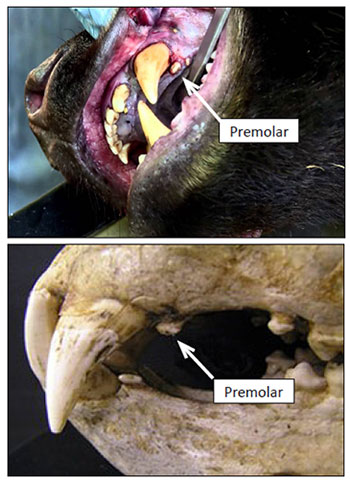Tooth Collection
SCDNR collects biological data from harvested bears to determine bear condition, sex and age. Part of this effort includes the collection of a small tooth (upper premolar) located behind the larger canines which is used to determine the age of the bear. SCDNR staff may not be able to physically check every bear, so hunter cooperation by submitting a tooth from their bear is an important contribution to bear management. This information is useful to annually assess the impact of harvest on the bear population by determination of the average age of harvested male and female bears in the various bear hunting areas. Additionally, by recording age and sex of harvested bears over a period of years, biologists can more accurately model bear populations. The SCDNR is asking for your help by sending in a premolar tooth from all harvested bears.
After you report your bear harvest, SCDNR will either contact you to examine the bear or will ask you to use the tooth collection packet. If you take your bear to a taxidermist, check with the taxidermist to confirm whether your bear tooth can be sent in to SCDNR. Many taxidermists will submit the tooth samples for you. Removal of the premolar tooth will not affect your mounted bear, as the original skull is not typically used in bear mounts.
Important - Do not break the tooth off at the gumline. We need the whole tooth including the root.
Instructions
- The tooth we need is the very small tooth immediately behind the upper canine tooth (see photos).
- Use a small flathead screwdriver or knife blade to push the gum down and away from the tooth. Work your tool or knife all around the tooth and into the gums to loosen the tooth.
- Pull the tooth out with pliers or pry it out using the canine as a lever.
![]() Black Bear Pre-Molar Extraction video
Black Bear Pre-Molar Extraction video
Courtesy of N.C. Wildlife Resources Commission
We appreciate your assistance & cooperation in collecting these important biological samples.

